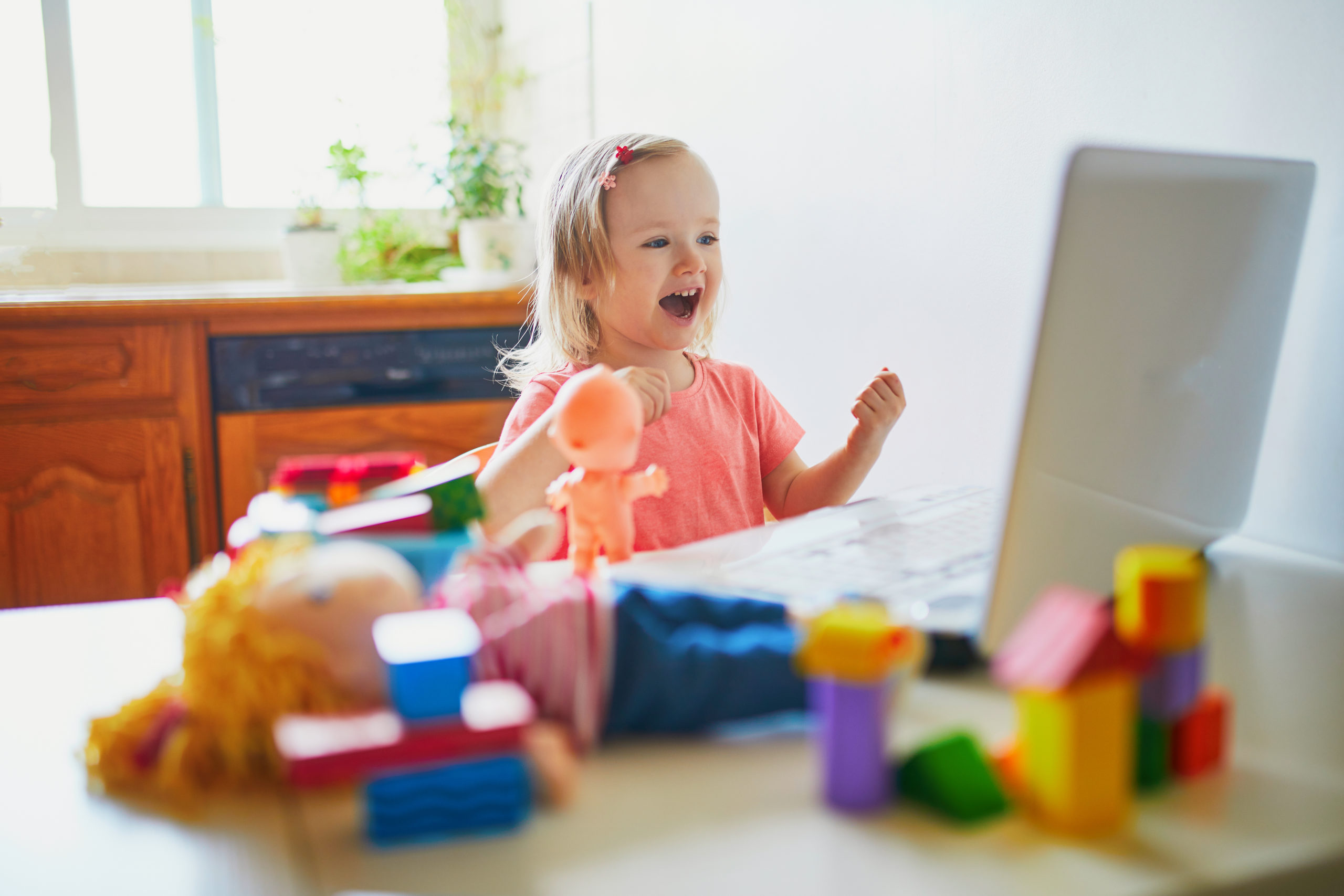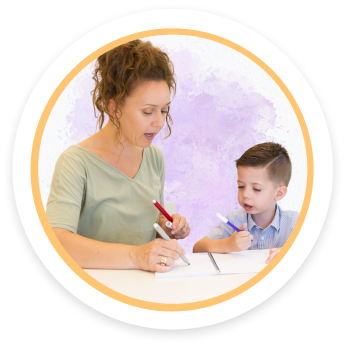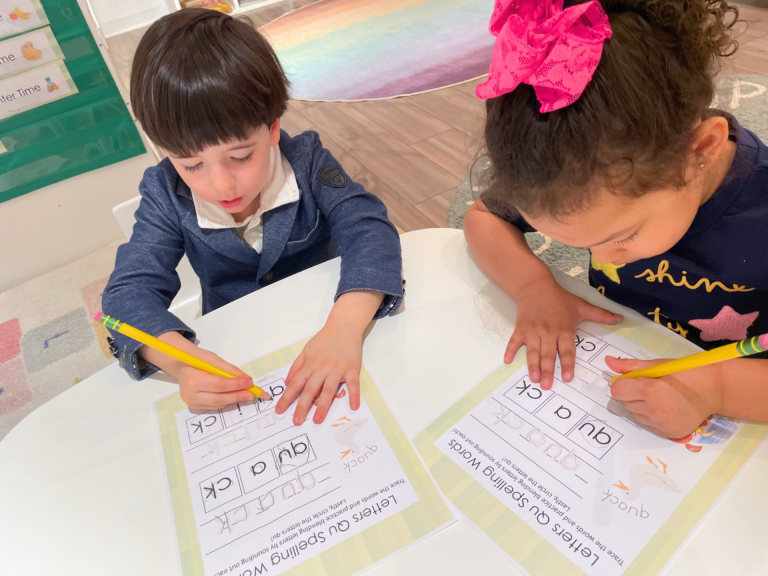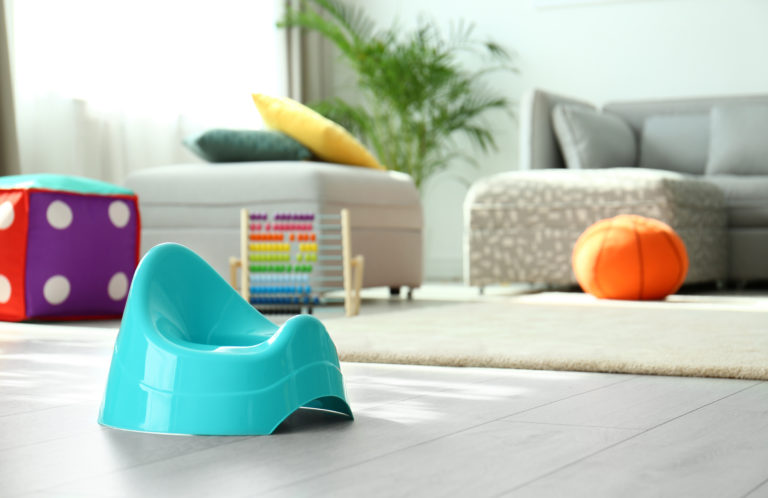Mapping Out the Wonderful World of Homeschool Preschool!

Creating Structure for Your Little One–and You!
So you have decided to make the leap into the world of preschool at home — congratulations! It’s a big step for both you and your little one, and is a great way to begin your little one’s early education experience. Now that you’ve made the decision…what happens next? You might be feeling a bit lost on where to start, especially if this is your first time doing any kind of teaching. There’s no doubt that it can be really overwhelming to start homeschool preschool, and that trying to find your footing in creating a schedule that will work for your little one as well as you is tough. However, it is also less daunting than most people might think it would be! A lot of parents are surprised to learn that some of the most important lessons your little one learns while doing preschool at home come from play, not just in books and from what we think of as “school”. Play is how little ones learn best, since it helps them develop skills, which are just as important as specific subjects like math and reading.
So, is play all day the way to go? Well, not totally. Part of what helps make a preschool at home learning environment work for your little one is structure. While it can be fun to be spontaneous, things like structure, schedules, or routines are great ways to keep daily life on track, and your little one will especially benefit from this. It may sound scary at first; after all, some little ones just can’t get enough of exploring the new, big world around them, and keeping a strict schedule may seem totally impossible for you. The good news is that you don’t actually need one!
Wait — what? Didn’t we just say schedules help? Let us explain! A schedule for your homeschool preschool or homeschool pre-k does not mean exactly what a schedule for an adult or even a young child means. “Schedule” can be a term used very loosely, focused more on creating a road map or general outline for the day. Lots of parental experts say that this more general type of schedule allows both you and your little one to maintain structure in your days. That way, you aren’t constantly having to think on your feet for new activities if your little one refuses to participate, or really wants to keep playing for an extra minute. Instead of strict timelines and beginnings and endings, the loose structure just keeps you moving and prepared for what moods or emotions may change. Things will happen, too — if your little one is sick, the weather changes, or something else big occurs — and that’s okay! Perfection should never be the goal with preschool at home. Part of the appeal of homeschool preschool is that flexibility, and participating in it is learning to roll with the punches.
Before getting into the nitty-gritty of structuring your weeks for preschool at home, it’s a good idea to check in about what sorts of materials you might want when doing homeschool preschool or homeschool pre-k. The real answer is: “it depends”. A lot of folks choose online homeschool or preschool at home for their homeschool pre-k because it’s a cost-friendly option, so purchasing a large number of items isn’t always feasible. However, if you have the money to spend on a couple of basics, we highly recommend a dry erase board and markers, some white butcher-block paper, crayon or marker sets, magnetic tiles, and counting bears. All of these items will allow you to do multiple activities with your little ones, and will last you a while!
The next question most folks ask about preschool at home is about the curriculum. What learning goals should be achieved? Is there a specific type of curriculum I should be following? Where do I find materials? Should my little one be completing worksheets as part of their homeschool pre-k? The best advice we can give you is to remember that preschool and play are two peas in a pod! So much of your little one’s learning is going to occur through their play, so the formal worksheets are not always necessary. It’s a good idea to develop goals, but focus on teaching through play rather than bookwork or other staples of higher education. A great way to create a little bit more organization for your little one’s learning, though, is to create themed weeks as part of your homeschool preschool! It’s a super smart way to make learning fun and keep it relatively organized, while not being so strict about curriculum. Some of our favorite themes are Kindness Week, Weather and Seasons Week, Ocean and Sea Creatures Week, Farm and Farm Animals Week, and Feelings Week! Some parents like to do weeks by letters of the alphabet. As your little one gets older, you can make the themes more advanced, such as Numbers 1-20, Handwriting and ABCS, or STEM Experiments! The preschool at home curriculum will grow with your little one.
You might also be wondering where you can find activities for your little one’s preschool at home experience. Fortunately, you have many resources that are easily accessible! To begin with, the internet can be your best friend when you’re first looking into finding activities and ideas to work on with your little one. Websites like PBS Kids or Pinterest are chock full of fun and educational activities, crafts, and more that your little one can complete at homeschool preschool. By searching for exactly what you need, you can find a great number of things. It’s also really important to look into your local homeschool community (or even start your own learning pod)! Many other parents may have tips, tricks, or other ideas and resources that you may not have heard of, so check in with those around you for inspiration for your little one’s homeschool pre-k.
So what does a loosely structured preschool at home schedule actually look like? Well, here’s a look into one possible version of a day at homeschool preschool:
6AM: Parents wake up and get ready! It’s a good idea for you to be prepped, awake, and ready to go before your little ones are. Spend the time eating a good breakfast, getting dressed, planning the day –whatever you need to do to make sure you’re ready to go for the day.
7:30AM-9AM: Breakfast, a learning activity and play! Learning activities usually only take up about thirty minutes of the day, and will give you a little extra time to make sure breakfast is ready or cleaned up, depending on how you’d like the day to go. There are a ton of different learning activities that your little one can do! Some of our favorites are color sorting, graphic items, mixing colors, or word searches with words they will know, such as their own name.
9:30 AM- 11AM: Outside time and parent exercises! Parent exercises are something like pushing your little ones in a stroller with a snack. Outside time can consist of anything from bubbles to chalk to trike riding and more.
11AM-12PM: Sensory or messy play! This is one of the most important activities a little one can do that will allow them to develop those motor skills. Lunch can be prepped while they play, too!
12PM-1PM: Lunchtime, clean-up, and nap preparation! Everybody needs food and rest, after all, and your little one is no different.
1-3PM: Naptime, quiet time, or other restful things. If your little one doesn’t like to go down, still try and designate this as a break time for both you and them!
3PM-4:30PM: Backyard fun! This is a weather and season permitting activity, but you can do anything from making snow angels in the winter to playing with a kiddie pool in summer. Make sure you’re supervising your little one!
4:30PM-5:30PM: Bathtime, TV, and dinner! When you’re finished playing outside, you can clean your little ones up if they get a bit messier than anticipated and have them watch a program while you get dinner ready!
5:30PM-6:30/7PM: Brush teeth, stories, and bed! This doesn’t have to be the definitive bedtime or end to your day. Maybe you prefer bathtime after dinner! This is just one example of a way you and your little one can finish up your day.
There are so many different ways you can plan out your days for you and your little one, and this is just one option! The most important thing about doing homeschool preschool is that you find a system that works for both your little one as well as you. It can be a trial and error process until you figure out what helps you create a successful preschool at home environment. Until then — bon voyage! Try Our Online Preschool for FREE! Playgarden Prep offers numerous educational videos from real teachers, and numerous DIY projects that support early learning and development for homeschool pre-k, preschool at home, and homeschool preschool!
Popular


Hi, I'm Miss Charlotte!
Miss Charlotte is an Education Director by trade, and a mom by heart. All 200+ of our DIY projects were created by Miss Charlotte, with the help of her expert DIY assistant—Her 4 year old daughter! With a MST degree in Early Childhood Education and 15 years of teaching experience, her blogs and DIY projects have been an incredible resource for our Playgarden Prep schools. We hope that your family loves them as much as we do!






